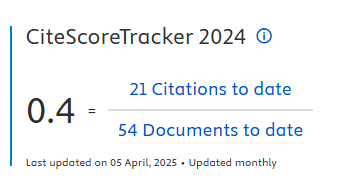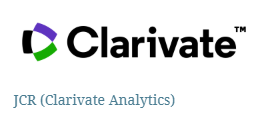Comparing the efficiency of technology and innovation of the EU and selected countries: the effects of EU framework programs
DOI:
https://doi.org/10.5585/2023.23741Keywords:
TTechnology and Innovation, Creative Destruction, Efficiency, DEA, European Union, Framework ProgramAbstract
Objective: This study has two purposes. The first is to determine the relatively impact of EU framework programs (Lisbon Strategy to Horizon 2020) on the level of technological efficiency by comparing them with EU members and non-EU members selected countries. This paper also to compare technology efficiency of the EU member countries separately and as a union. The second is purpose to evaluate technological efficiency scores and the economic growth rates of the EU and the selected countries.
Originality/Relevance: The relative efficiency of the technology and innovation of the EU was compared with other selected countries for 2000, 2005, 2010, 2015 and 2018 and evaluated. In previous studies, we could not find a study evaluating the long-term impact of the European Union's framework programs and its efficiency of innovation.
Methodology/approach: For measuring efficiency, DEA method was used with two inputs and four outputs which is represented the technology and innovations.
Main results: The evidence shows that the efficiency of the technology and innovation of the EU was quite low in 2000, and it has reached an increasing trend over the years and reached the full efficient in 2015 and 2018. The analyses which were done separately for 26 EU countries, the efficiency scores are relatively low among EU countries. It reveals that the EU provides a strong platform for R&D collaborations for creative destruction.
Social/management contributions: The EU should continue to design promoting cooperation networks, frameworks programs to support stable economic growth patterns and long-term technology-based growth targets, considering the distinctive features of its economic system.
Downloads
References
Altın,O. and Kaya, A.A. (2009). Türkiye’de Ar-Ge Harcamaları ve Ekonomik Büyüme Arasındaki Nedensel İlişkinin Analizi, Ege Academic Review, 9 (1), 251-259. https://dergipark.org.tr/tr/download/article-file/557272
Antonelli, C. (2009). The Economics of Innovation: From the Classical Legacies to the Economics of Complexity, Economics of Innovation and New Technology, 18(7), 611-646. https://doi.org/10.1080/10438590802564543
Antonelli, C. (2018). Knowledge as an Economic Good: Exhaustibility versus Appropriability?, The Journal of Technology Transfer, 44, 647–658. https://doi.org/10.1007/s10961-018-9665-5.
Antonelli, C. and Fassio, C. (2015). Globalization and the Knowledge-Driven Economy, Economic Development Quarterly, 30(1), 3-14. https://doi.org/10.1177/0891242415617239.
Bianchini, S., Pellegrino, G. and Tamagni, F. (2018). Innovation Complementarities and Firm Growth, Industrial and Corporate Change, Vol. 27 No. 4, 657-676. https://doi.org/10.1093/icc/dty008
Caballero, R.J. and Hammour, H, L. (1996). On the Timing and Efficiency of Creative Destruction, The Quarterly Journal of
Economics, 111(3), 805-852. https://doi.org/10.2307/2946673.
Cecere, G., and Corrocher, N. (2015). The Intensity of Interregional Cooperation in Information and Communication Technology Projects: An Empirical Analysis of the Framework Programme, Regional Studies 49 (2): 204–218. https://doi.org/10.1080/00343404.2012.759651
Coccia, M. (2012). Political Economy of R&D to Support the Modern Competitiveness of Nations and Determinants of Economic Optimization and Inertia, Technovation, 370–379. https://doi.org/10.1016/j.technovation.2012.03.005.
Coelli, T.J., Prasada Rao, D.S., O’Donnell, C.J., Battese, G.E. (2005). An Introduction to Efficiency and Productivity Analysis, Springer Science+Business Media, Inc.
Commission of the European Communities (2005). Proposal for a Decision of the European Parliament and of the Council Establishing a Competitiveness and Innovation Framework Programme (2007-2013), 6.4.2005, COM (2005) 121 final.
Cooper, W.W., Seiford, L.M., Tone, K. (2006). Introduction to Data Envelopment Analysis and Its Uses, With DEA-Solver Software and References, Springer Science+Business Media, Inc.
Cruz-Cázares, C., Bayona-Sáez, C. and García-Marco, T. (2013). You Can’t Manage Right What You Can’t Measure Well: Technological Innovation Efficiency, Research Policy, Vol. 4,2 No, 6-7 1239-1250. https://doi.org/10.1016/j.respol.2013.03.012
Duran, P., Kammerlander, N., van Essen, M. and Zellweger, T.M. (2016). Doing More with Less: Innovation Input and Output in Family Firms, Academy of Management Journal, Vol. 59 No. 4,1224-1264. http://dx.doi.org/10.5465/amj.2014.042 .
Dosi, G., Pavitt, K. and Soete, L. (1990). The Economics of Technical Change and International Trade, New York University Press.
European Commission (1995). Green Paper on Innovation, https://europa.eu/documents/comm/green_papers/pdf/com95_688_e
n.pdf
European Commission (2004). Commission of The European Communities, Towards a European Strategy for Nanotechnology, Brussels, 12.5.2004 COM (2004) 338 final. https://eurlex.europa.eu/LexUriServ/LexUriServ.do?uri=COM:2004:0338:FIN:EN:PDF
European Commission (2005). Communication: Implementing the Community Lisbon Programme: More Research and Innovation—Investing in Growth and Employment: A Common Approach, COM(2005)488final{SEC(2005)1253},12 October, Brussels, European Commission
European Commission (2011). Horizon 2020 - The Framework Program for Research and Innovation, Brussels, 30.11.2011 COM(2011) 808 final. https://eur-lex.europa.eu/legal-content/EN/TXT/PDF/?uri=CELEX:52011DC0808&from=EN
European Commission. (2013). Sixth FP7 Monitoring Report (Monitoring Report 2012), 7th August 2013.
European Council (2000). Presidency Conclusions: Lisbon European Council, 23-24 March 2000. Commission of the European
Communities (2000), Innovation Policy in a Knowledge-Based
Economy, A MERIT Study Commissioned by the European Commission, June.
Foster, L., Haltiwanger, J. and Krizan, C. (2001). Aggregate Productivity Growth: Lessons from Microeconomic Evidence. In New Developments in Productivity Analysis’, Ed. E. Dean, M. Harper and C. Hulten. Chicago: University of Chicago Press.
Gambardella, A., Mariani, M. and Torrisi, S. (2009). How ‘Provincial’ Is Your Region? Openness And Regional Performance in Europe’, Regional Studies 43 (7): 935–947. https://doi.org/10.1080/00343400801932268
Goel, R.J., Payne, J.E. and Ram, R. (2008). R&D Expenditures and U.S. Economic Growth: A Disaggregated Approach, Journal of Policy Modeling 30 (2), 237–250. https://doi.org/10.1016/j.jpolmod.2007.04.008
Griffith, R., Redding, S. and Reenen, J. V. (2004). Mapping the Two Faces of R&D: Productivity Growth in a Panel of OECD Industries, The Review of Economics and Statistics, 86 (4), 883‐895. https://doi.org/10.1162/0034653043125194
Guan, J. and Chen, K. (2012). Modeling The Relative Efficiency of National Innovation Systems, Res. Policy 41 (1), 102–115. https://doi.org/10.1016/j.respol.2011.07.001
Guan, J. and Zuo, K (2014). A Cross-Country Comparison of Innovation Efficiency, Research Policy (41),102–115. http://dx.doi.org/10.1007/s11192-014-1288-5
Hall, B. H. and Mairesse, J. (1995). Exploring the Relationship between R&D and Productivity in French Manufacturing Firms, Journal Econometrics, 65(1),263–293. https://doi.org/10.1016/0304-4076(94)01604-X
Kontolaimou, A., Giotopoulos, I. and Tsakanikas, A. (2016). A Typology of European Countries Based on Innovation Efficiency And Technology Gaps: The Role Of Early-Stage Entrepreneurship, Economic Modelling (52), 477–484. https://doi.org/10.1016/j.econmod.2015.09.028
Lee, H. Y. and Park, Y. T. (2005). An International Comparison of R&D Efficiency: DEA Approach. Asian J. Technol. Innov. 13 (2), 207–222. https://doi.org/10.1080/19761597.2005.9668614
Martínez-Alonso, R., Martínez-Romero, M. J. and Rojo-Ramírez, A. A. (2020), The Impact of Technological Innovation Efficiency on Firm Growth: The Moderating Role of Family Involvement in Management,
European Journal of Innovation Management, Vol. 23 No. 1. 134-155. https://doi.org/10.1108/EJIM-09-2018-0210
Muscio, A. and Ciffolilli, A. (2020). What Drives the Capacity to Integrate Industry 4.0 Technologies? Evidence from European R&D Projects, Economics of Innovation and New Technology, 29(2), 169-183. https://doi.org/10.1080/10438599.2019.1597413
OECD (1998). Working Group on Innovation and Technology Policy, “National Innovation Systems: Policy Implications”, OECD/DSTI/STP/TIP (98)7/REV1, OLIS: 30 October.
OECD (2018). OECD Science, Technology and Innovation Outlook 2018: Adapting to Technological and Societal Disruption, OECD Publishing, Paris. https://doi.org/10.1787/sti_in_outlook-2018-en
Paier, M., and Scherngell, T. (2011). Determinants of Collaboration in European R&D Networks: Empirical Evidence from a Discrete Choice Model, Industry and Innovation 18 (1): 89–104. https://doi.org/10.1080/13662716.2010.528935.
Ramanathan, R. (2003). An Introduction to Data Envelopment
Analysis – A Tool for Performance Measurement, Sage Publications, New Delhi.
Ruggiero, J. (2011), Frontiers in Major Leauge Baseball – Nonparametric Analysis of Performance Using Data Envelopment Analysis, Springer Science+Business Media, Inc.
Schumpeter, J. A. (1942). Capitalism, Socialism, and Democracy. New York: Harper & Bros.
Schumpeter, J. A. (2012). The Theory of Economic Development with a New Introduction by John E. Elliott. Cambridge: Harvard University Press.
Sharma, S. and Thomas, V. (2008). Inter Country R&D Efficiency Analysis: An Application of Data Envelopment Analysis. Scientometrics 76 (3), 483–501. https://doi.org/10.1007/s11192-007-1896-4
Tsamadias, C., Pegkas, P., Mamatzakis, E. and Staikouras, C. (2019). Does R&D, Human Capital and FDI Matter for TFP in OECD Countries? Economics of Innovation and New Technology, 28(4), 386-406. https://doi.org/10.1080/10438599.2018.1502394.
Zemtsov, S. and Kotsemir, M. (2019). An Assessment of Regional Innovation System Efficiency in Russia: The Application of The DEA Approach. Scientometrics (2019) 120:375–404. https://doi.org/10.1007/s11192-019-03130-y.
Downloads
Published
How to Cite
Issue
Section
License
Copyright (c) 2023 Gökçe MANAVGAT, Ayhan DEMİRCİ

This work is licensed under a Creative Commons Attribution-NonCommercial-ShareAlike 4.0 International License.
- Abstract 356
- pdf 374













